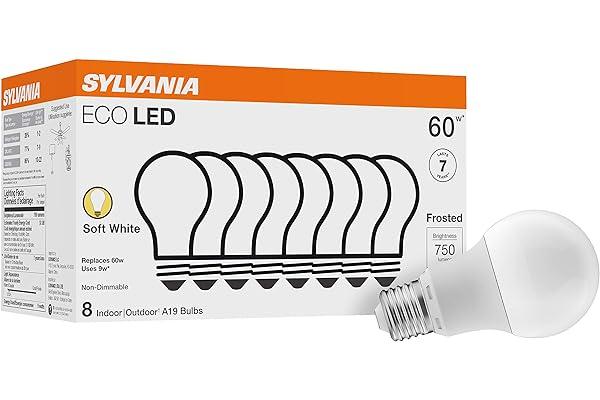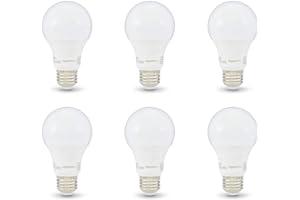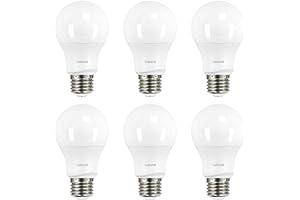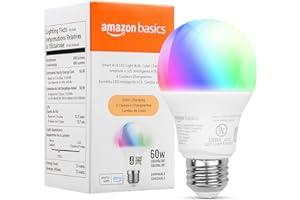Best Selling LED Bulbs: The Future of Lighting
LED bulbs are a type of lighting that uses light-emitting diodes (LEDs) to produce light. LEDs are small, energy-efficient, and long-lasting, making them a great choice for a variety of applications. LED bulbs are becoming increasingly popular as a replacement for traditional incandescent and compact fluorescent (CFL) bulbs.
Benefits of LED Bulbs
- Energy Efficiency: LED bulbs use up to 80% less energy than traditional incandescent bulbs, and up to 50% less energy than CFL bulbs.
- Long Lifespan: LED bulbs can last up to 50,000 hours, which is much longer than traditional incandescent bulbs (1,000 hours) and CFL bulbs (10,000 hours).
- Durability: LED bulbs are more durable than traditional incandescent bulbs and CFL bulbs, making them less likely to break if dropped or bumped.
- Instant On: LED bulbs turn on instantly, unlike CFL bulbs, which can take a few seconds to warm up.
- No Flickering: LED bulbs do not flicker, unlike fluorescent bulbs, which can be annoying and even cause headaches.
- Environmentally Friendly: LED bulbs do not contain mercury, which is a hazardous material found in CFL bulbs.
Links to Best Selling LED Bulbs
- SYLVANIA ECO LED Light Bulb, A19 60W Equivalent, Efficient 9W, 7 Year, 750 Lumens, 2700K, Non-Dimmable, Frosted, Soft White - 8 Pack (40821) (paid link)
- Amazon Basics 40W Equivalent, Soft White, Non-Dimmable, 10,000 Hour Lifetime, A19 LED Light Bulb , 6-Pack (paid link)
- Linkind A19 LED Light Bulbs Dimmable, 60W Equivalent, 2700K Soft White, 9.5W 800 Lumens, E26 Standard Base, UL Listed, Lighting for Bedroom Living Room Home Office, 6 Packs (paid link)
- Amazon Basics - Smart A19 LED Light Bulb, 2.4 GHz Wi-Fi, 7.5W (Equivalent to 60W) 800LM, Works with Alexa Only, 1-Pack, Certified for Humans, Multicolor (paid link)
Types of LED Bulbs
There are many different types of LED bulbs available, including:
- A19: This is the most common type of LED bulb, and it is designed to replace traditional incandescent bulbs.
- BR30: This type of LED bulb is used in recessed lighting fixtures.
- PAR38: This type of LED bulb is used in outdoor lighting fixtures.
- MR16: This type of LED bulb is used in track lighting fixtures.
- GU10: This type of LED bulb is used in recessed lighting fixtures.
Choosing the Right LED Bulb
When choosing an LED bulb, there are a few things you need to consider:
- Brightness: LED bulbs are measured in lumens, which is a measure of brightness. The higher the lumen rating, the brighter the bulb.
- Color Temperature: LED bulbs come in a variety of color temperatures, from warm white to cool white. Warm white is similar to the light from a traditional incandescent bulb, while cool white is more like the light from a fluorescent bulb.
- Dimmability: Some LED bulbs are dimmable, while others are not. If you want to be able to dim the light, make sure you choose a dimmable LED bulb.
- Lifespan: LED bulbs can last up to 50,000 hours, but some bulbs may have a shorter lifespan. Check the packaging to see how long the bulb is expected to last.
Conclusion
LED bulbs are a great choice for a variety of applications. They are energy-efficient, long-lasting, durable, and environmentally friendly. When choosing an LED bulb, be sure to consider the brightness, color temperature, dimmability, and lifespan of the bulb.
Note: As an Amazon Associate I earn from qualifying purchases.
best-sellers-industrial-scientific
led-bulbs
best-sellers-industrial-scientific-led-bulbs



